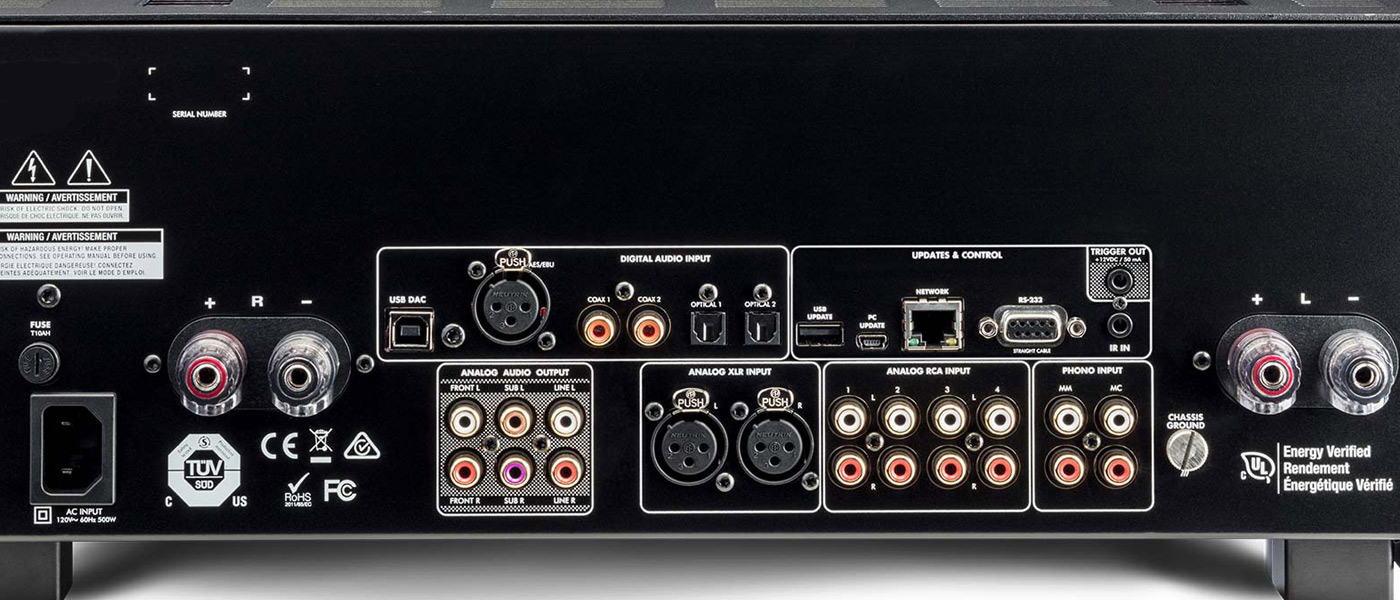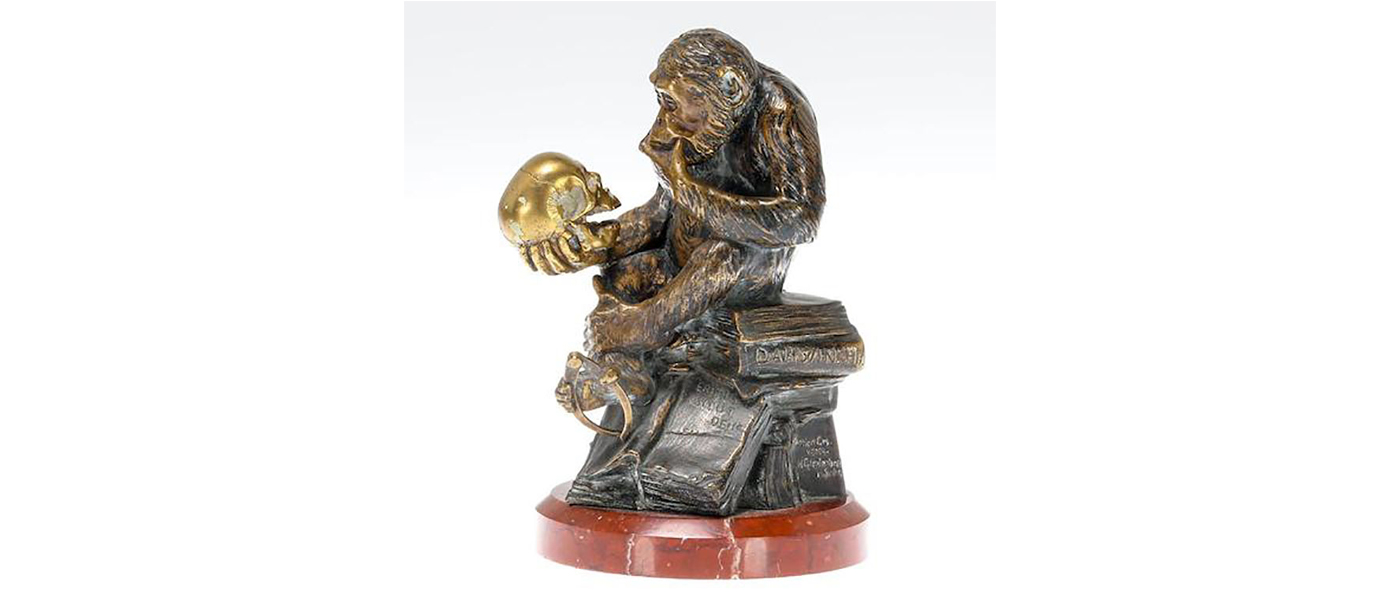
And despite my decades-long interest in stereo integrated amplifiers, I have found few that met the definition in their own time and none (that I know of) which meet that definition now.
The 21st Century integrated amplifier has grown only minimally from its crude 20th Century roots. The reason is that while technology has evolved exponentially, the integrated amplifier itself is still severely anchored to the grossly limiting concept of an analog preamplifier mated to an analog power amplifier.
If you want much more than that, you’re forced to consider multi-channel “home theater” abominations in which the whole concept of audio quality is routinely sacrificed to the expediency of more channels, more surround codecs, and ever lower costs.
I fully expect most surround sound enthusiasts to take rabid (but only minimally justified) offense at the statement above, but I call things as I see (and hear) them.
Secrets Sponsor
What is it that current stereo “integrated amplifiers” lack to be considered fully integrated (or “how do I hate thee, let me count the ways…”)?
Most integrated amplifiers lack built-in digital to analog converters (DACs). This is the case even though the primary means of audio playback these days is from digital sources. I also say this despite the brief and unsustainable resurgence of the vinyl phonograph record. Those integrated amplifiers that DO offer DACs usually offer the circuitry as part of the integrated amplifier’s motherboard. When the DAC becomes obsolete, the entire amp is obsolete, if some or all analog audio inputs are converted to digital and then back to analog. Not a good design considering the rapid mutation and evolutionary genomics in digital sampling rates, conversion methods (ladder technology vs. PCM, etc.), CODECS, and audio-pass filter designs.
If your so-called “integrated amplifier” lacks a DAC, that’s a second device that you (currently) need for your equipment rack (with its own power supply and interconnect wiring).
But before you can get your digits to the DAC, you need to move them from your networked source (or online receiver). This means you need a streamer. The purpose of a streamer is to successfully receive signals from a server over Ethernet, 802.11 wireless networks, or the Internet itself and output those digital signals in a format that the DAC can use.
Common interfaces between the streamer and the DAC include USB, Optical TOSLINK, or Coaxial PCM. A few DACs and Streamers offer proprietary or more obscure connections (ABS/EBU, HDMI, etc.). But very, very few integrated amplifiers incorporate streaming technology.
If your so-called “integrated amplifier” lacks a streamer, that’s the third device that you need for your equipment rack (with its own power supply and even more interconnects).
But wait – the majority of “integrated amplifiers” lack both analog equalizers and digital room correction. This means that unless your speakers are mirror-imaged in a completely symmetrical room, you’ll need one or more of the following:
- Balance control
- Outboard equalizer
- Stand-alone room correction device
Each of these will want its own power supply and (now becoming a rat’s nest of) interconnects, now bumping up the necessary devices to as much as six!
And no, you aren’t nearly finished yet. If you run a subwoofer, you’ll want a full crossover with both high-pass and low-pass legs. Many opine (in profoundly deprecating tones) that they can “get by just fine” by running their satellite speakers full range and “blending in the sub below.” They think this with fervent but misguided gospel-style faith until they hear a true crossover in action. (What a subwoofer crossover does is to attenuate frequencies below the crossover point for the principal region of the frequencies, i.e., for example, 60 Hz, and is thus called a “high-pass filter”, and attenuate frequencies above the crossover point for the subwoofer, i.e., 60 Hz, and is thus called a “low-pass filter”. Ed.)
The problem with outboard stereo crossovers is that there are so few good ones available. The only two that I know of are the ancient Dahlquist DQ-LP1 crossover (and best of luck finding one of those at all, much less one that still works) and the JL Audio CR-1. The JL crossover is a great product and completely neutral sounding, but its list price is $3,000, and most can’t afford it, even on the used market.
So, in addition to the potential six devices previously described, you should also plan on finding something to use as a subwoofer crossover that will function at the preamplifier signal level and that doesn’t sound like it fell out of a boom-box car. Be particularly careful here – If you’re working in the analog input domain, many crossovers reconvert the signal to digital, apply the crossover, and then convert back to analog. This is fine for the subwoofer leg, where distortion figures are already in the greater-than-one-percent range, but for the satellite speakers, these extra A-D / D-A conversions are both damaging AND audible.
That now, with the subwoofer crossover, makes as many as seven devices (each with its own power supply and with a now truly impressive rat’s nest of interconnects).
And finally, it is becoming harder and harder to run signal wires all around the room for your subwoofer(s) without picking up hum. The best way I’ve found to avoid this is to use wireless transmitters for the sub(s). My favorite wireless subwoofer transmitter/receiver is the Emotiva “Virtual Copper.” These boxes seem to work with absolutely no hassle and with eternal reliability. Your choices may vary…. But of course, even the classy Emotiva transmitters require their own power supplies and vestigial interconnects.
Can we agree now to a worst-case of EIGHT different devices all of which require their own power cords and interconnects? Integrated? Really?
Is it becoming clear how “disintegrated” the so-called “integrated amplifier” solution is? Manufacturers COULD offer greater integration in their products, but apparently don’t think that customers care. I, personally, think that the manufacturers just don’t do enough market research. What would I consider the ideal integrated amplifier? My “dream box” would include, in addition to a great analog preamplifier and power amplifier stage the following items:
- Card-based streamer / DAC combination that could be replaced as new technology arrives. The input set would require (at a minimum) DLNA Ethernet streaming, Roon compatibility, Optical TOSLINK, and USB inputs. Nice to have would be coaxial digital and HDMI input. And in fact, if the manufacturer wished to put a hard-drive cradle, a controller chip, and some software inside the device, that would save us all from having to use network-attached storage (NAS).
- Card-based equalizer and balance control. An optional room correction card would also be welcome. If these are to be done in the digital domain, then they MUST be implemented before the DAC chip to avoid destructive additional A-D / D-A conversions.
- Card-based subwoofer crossover with selectable frequency turnover (crossover) points to best match the specific speakers & sub(s) you’re using. In fact, control of the slopes would also be welcome. Note that the high-pass section feeding the satellites must be analog, not digital to avoid signal degradation, so unless this crossover is implemented prior to the DAC chip, use analog filtering.
- Onboard subwoofer signal transmitter that could control at least two discrete channels of subwoofer signal (fed by the crossover mentioned above). The company should also offer optional receiver devices that the consumer could add as the number of subwoofers in the system grows. In fact, subwoofer room correction for each sub would also be most welcome.
Now the “integrated-amplifier” manufacturers are sure to complain about my list, saying that adding such features would double or triple the cost of their products. To which I must say “not necessarily so.” Outboard devices are available to do almost all these functions and at bargain prices. When one considers that outboard devices are always more inherently expensive (because each of them must include its own external case and a discreet power supply), it becomes apparent that the features could be added to the integrated amplifier for but a fraction of the cost of standalone components. Examples of functional yet inexpensive standalone items include:
DAC: Audioquest Dragonfly & others from Meridian / Emotiva / etc.
Streamer: Roku Express / Bluesound Node 2i / Audiolab 6000N Play / etc.
Equalizer: Schiit Loki / Behringer MiniFBQ800 / etc.
Crossover: Harrison-Labs FMod units / Behringer Super-X Pro CX2310 / etc.
Sub Room Correction: Dayton Audio DSP-LF / etc.
Wireless Sub Systems: Dayton Audio Wavelink / Emotiva Virtual Copper / etc.
So alas the poor stereo integrated amplifier – integrated in name only, abandoned by the R&D teams of virtually all manufacturers, sacrificed to the multi-channel dreck that is foisted on the unsuspecting public, and generally ignored by the purchasing consumer mass who have no inkling of how superior a good stereo integrated amplifier can actually sound. The public has been sold on the idea that to have exceptional stereo sound, you must spend megabucks on separate preamplifiers and power amps. Yet but for manufacturer intransigence, the glories of accurate stereo reproduction could be available for no more cost than what one would waste on a multi-channel box of questionable parentage and grossly inferior audio quality.
Secrets Sponsor
In fact, the original promise of the integrated amplifier (better sound than separates due to judicious matching of the preamplifier and power amplifier sections) has rarely been achieved. This is due to manufacturer desires to push customers who want better sound quality to their (more expensive and far more profitable) separates lines.
British companies have done a bit more in integrated amplifier sonic development than has the international manufacturing community as a whole, but even the majority of British integrated amplifiers lack one or more (often many) of the above attributes. The Brits seem to have focused on the “lowly” stereo integrated due to the cultural preference in their home market toward compact systems that give away little or nothing in sound quality to more extravagant preamplifier / power-amplifier combinations.
So, let’s consider this a challenge to manufacturers to increase the feature set of your stereo integrated amplifiers in pursuit of a LARGE number of previous, current, and upcoming audiophiles who would much prefer the simplicity and (dare I say it…) integration that is the promise of the 21st century integrated amplifier. And don’t forget, no fair converting all analog inputs to digital for processing and then converting back to analog.
We’re waiting…
Glenn Young


